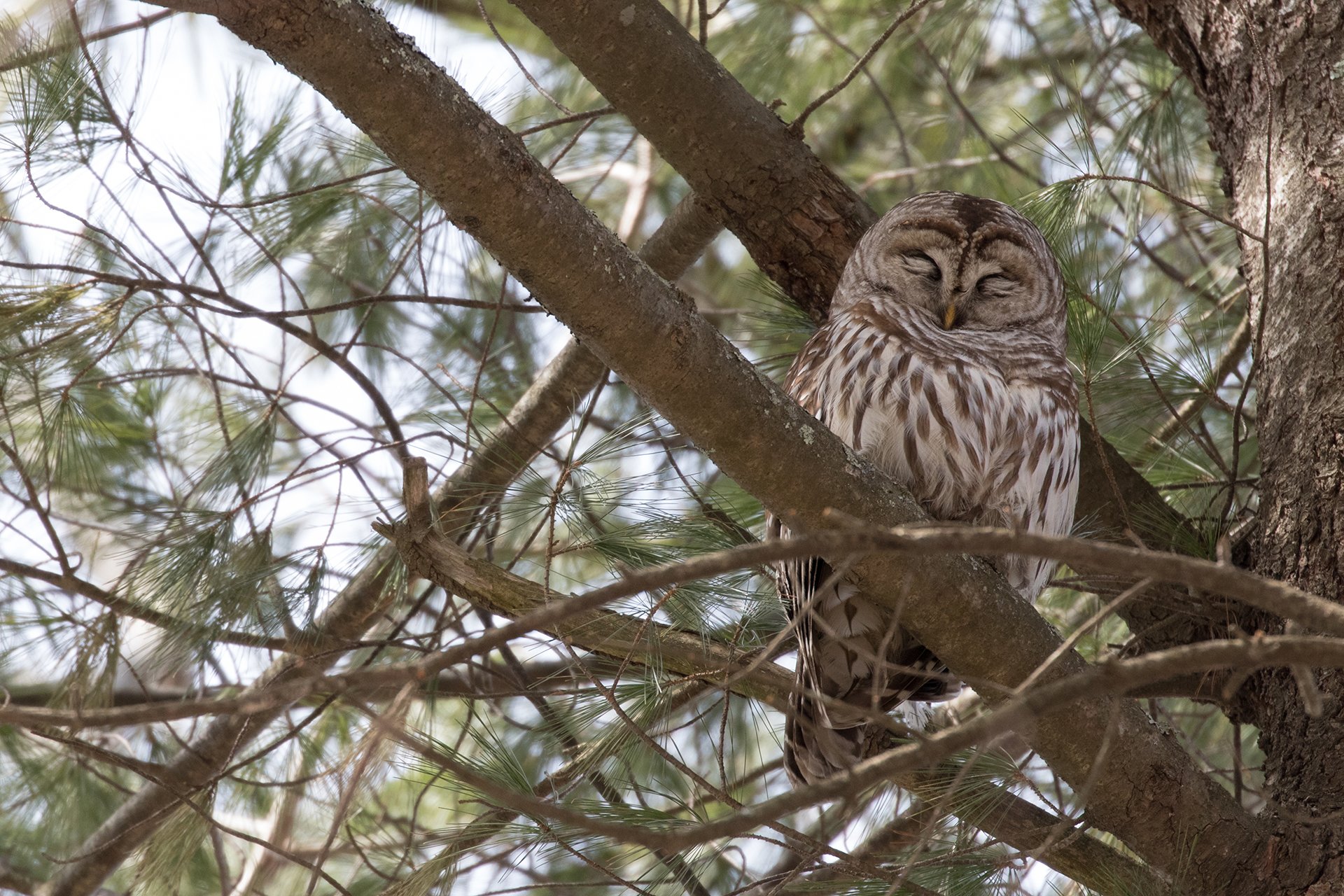Owls
Owls are among the best-known birds in folklore and literature, yet they remain something of a mystery to most people. That's not surprising, though, since they are mainly nocturnal (active at night) and hide during the day.
Their striking physical appearance and unique behaviors make it easy to understand why owls have inspired centuries of myth and legend across cultures. Owls also possess some amazing adaptations—like the 14 different neck bones that allow them to turn their heads nearly three-quarters of the way around.
In fact, it's hard not to be amazed by owls
Types of Owls in Massachusetts
There are eight owl species that you may spot in Massachusetts. They're found in all sorts of habitats, including dense forests, wood lots, swamps, marshes, grasslands—and even residential neighborhoods!
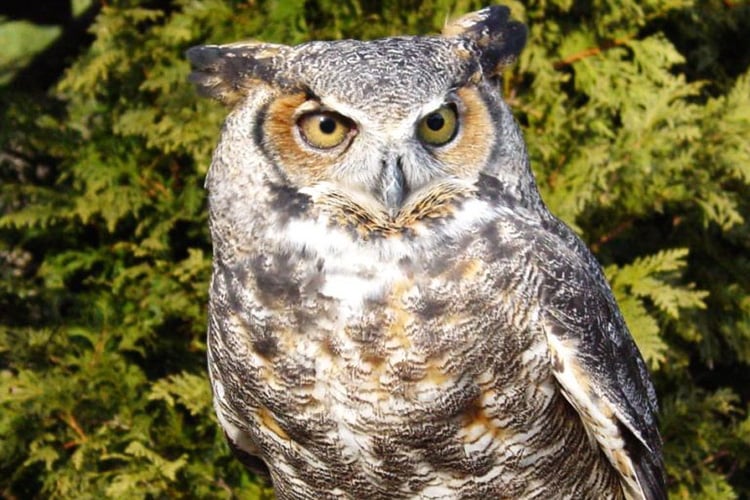
Great Horned Owls
These large owls can be found in a variety of habitats throughout most of the state. They are commonly heard in winter as they seek mates.
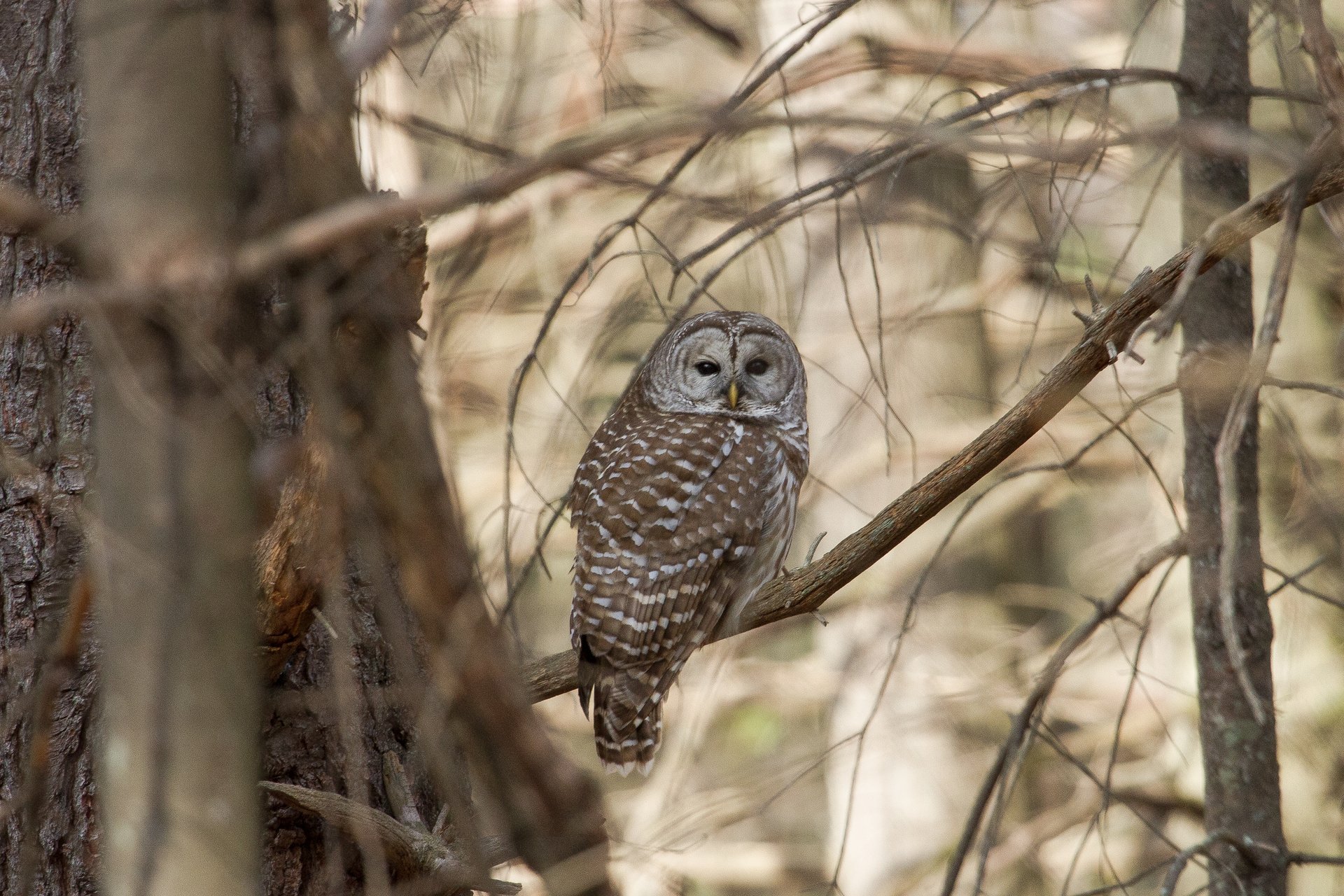
Barred Owls
Can be found in most of Massachusetts other than the Islands, and can be heard calling year-round—listen for who cooks for you, who cooks for you all?
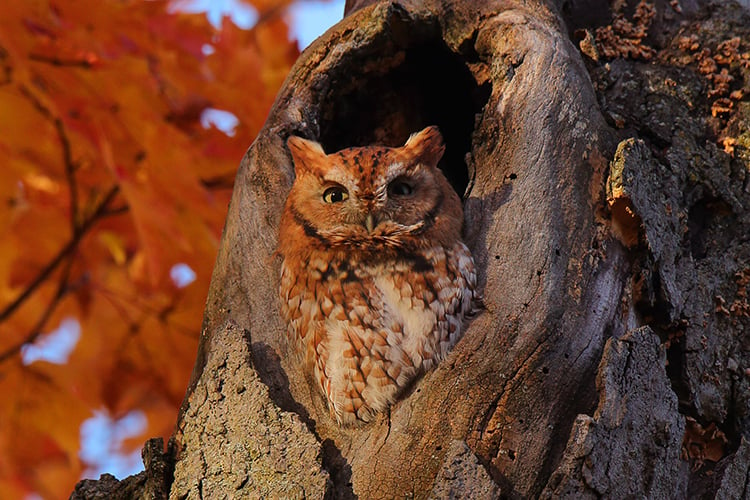
Eastern Screech-owls
This owl is more common from the Connecticut River east, as it prefers deciduous forests. They call in late winter and early spring.
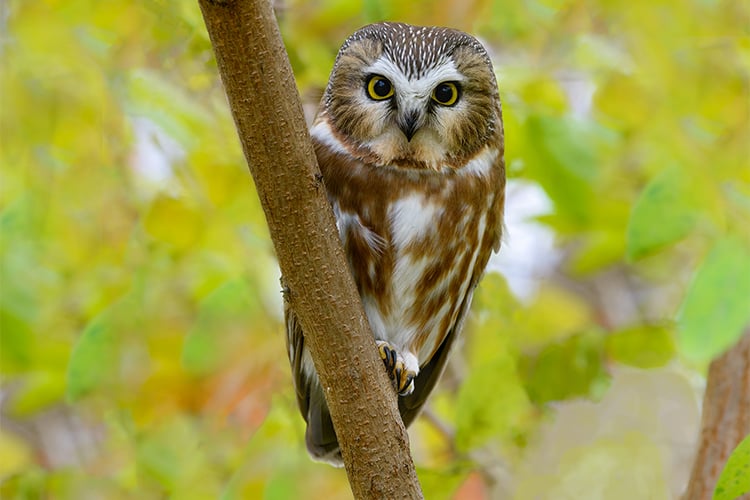
Northern Saw-whet Owls
The smallest in the eastern US at 7-8 inches long. They're not often seen (or heard) in the wild but there is an active population.
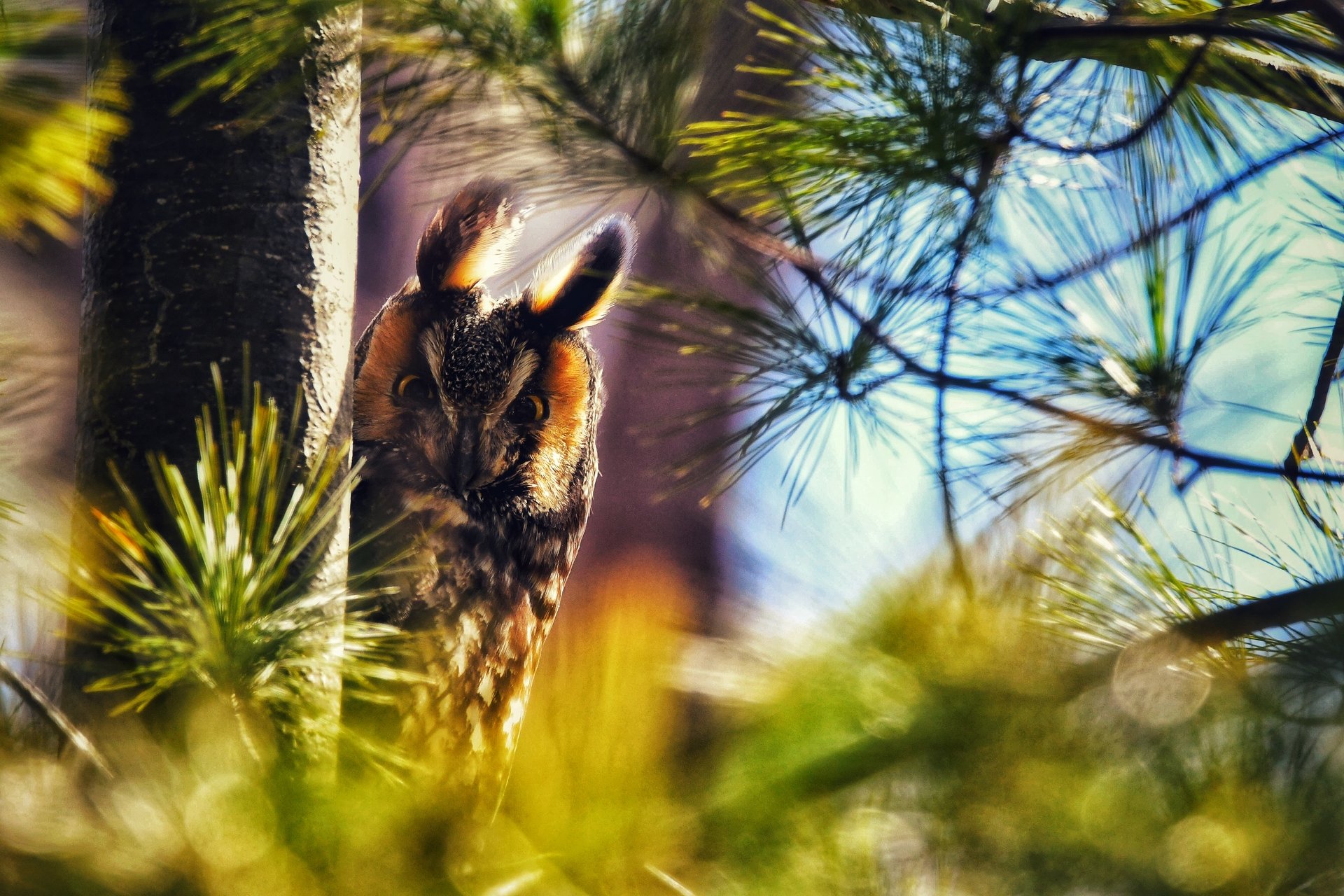
Long-eared Owls
This seldom-seen owl prefers conifer forests and dense thickets. Few sightings have been recorded in the state in the last two decades.
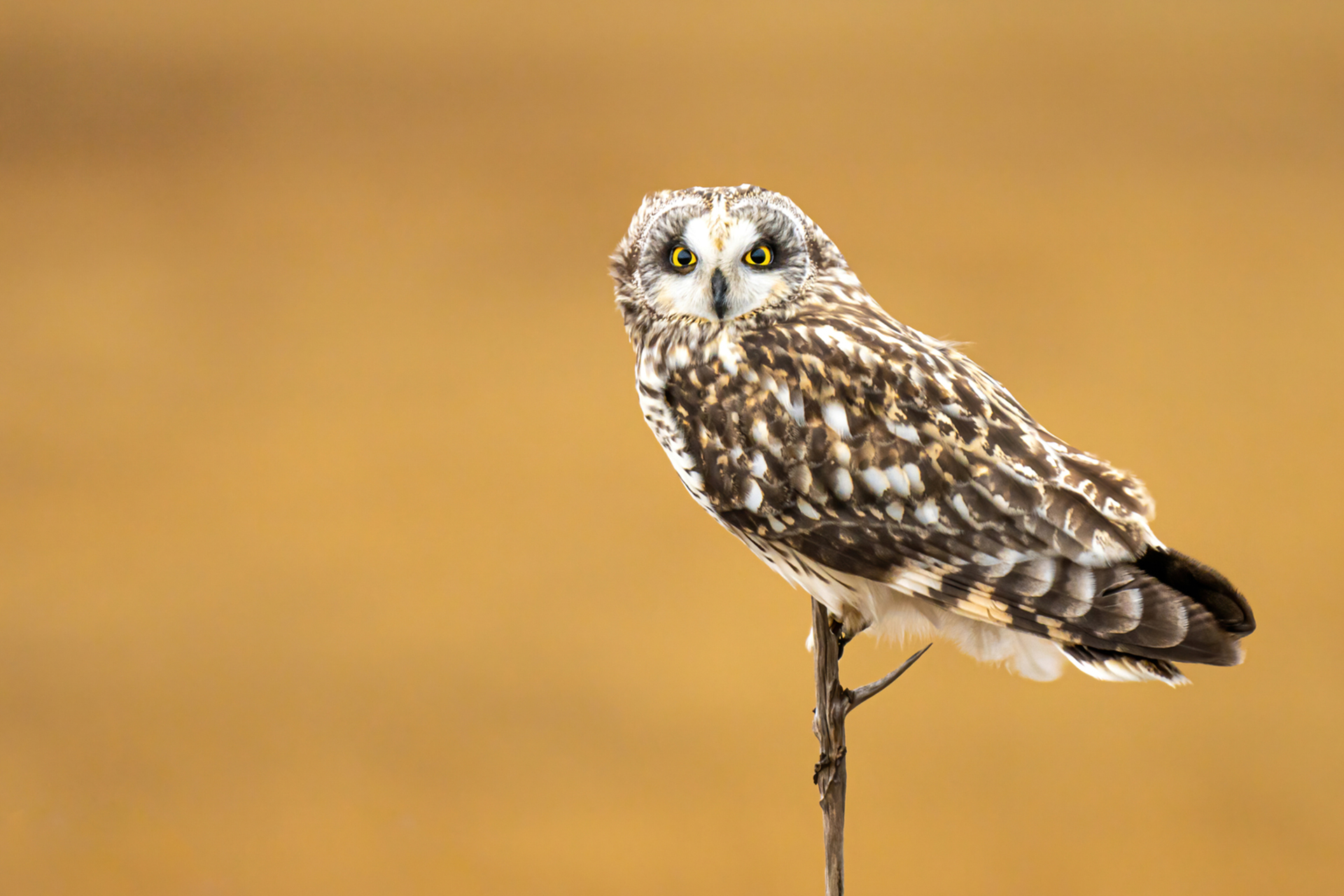
Short-eared Owl
These owls hunt in open country and they nest on the ground. In Massachusetts, they breed only on the islands off Cape Cod.
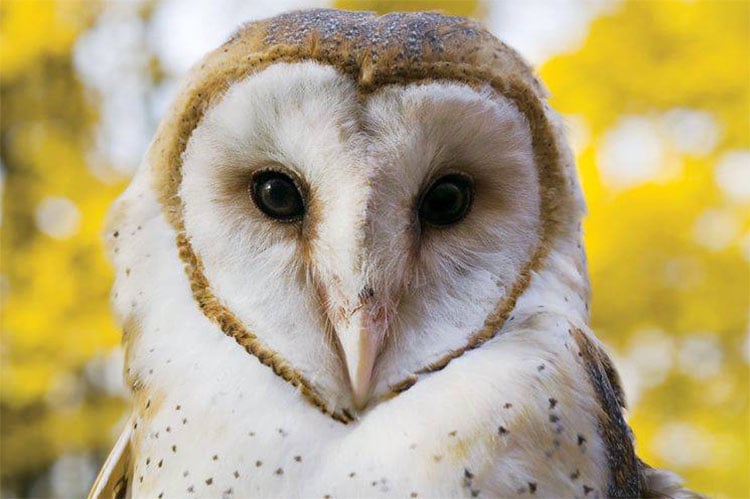
Barn Owls
They prefer to hunt in open country and readily nest in abandoned structures with convenient openings.
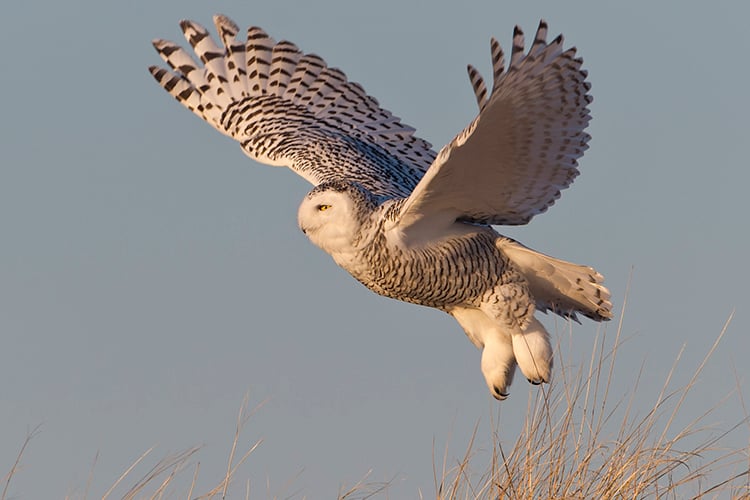
Snowy Owls
These large owls breed in the Arctic but can be seen in Massachusetts during the winter. Learn more about Snowy Owls
Owl Behavior
Most owls tend to focus their activities under a cloak of darkness, and do not begin hunting until shortly after dark. Long-eared Owls and Short-eared Owls often begin hunting just before sundown, and they can be seen coursing low over meadows in search of prey.
During the day, most owls are likely to sleep or doze in the security of a thick evergreen or inside a tree cavity.
Most species are especially vocal just after sunset and then again just before sunrise. However, during courtship and the early breeding season, they often can be heard throughout the night. Some species, such as the Eastern Screech Owl and Barred Owl, will vocalize during the day too.
Owl Pellets
Owls eat their prey (typically rodents) whole and then regurgitate the indigestible fur and bones as pellets. Sometimes you can find dozens of these pellets under a single tree if a bird has a favorite roosting spot.
The size of the pellets is often suggestive of the species:
- Finger-sized usually means a smaller owl such as a Saw-whet or Eastern Screech
- Thumb-size is likely to be a Barred or Long-eared Owl
- Barn and Great Horned Owls can produce pellets larger than golf balls
Where Can I See Owls?
Crows, Blue Jays, and other songbirds can sometimes lead you to a roosting owl. These birds engage in an instinctual behavior known as "mobbing" where they draw attention to a predator by harassing it while making loud alarm calls. If you approach the scene quietly, good views of the "mobbed" owl may be obtained.
Many owls will use the same roost tree for several days, and evidence of this can be found in "whitewash" on branches and on the ground, and owl pellets.
How Mass Audubon is Supporting Birds in Massachusetts
Mass Audubon works at our wildlife sanctuaries and beyond to ensure that the nature of Massachusetts continues to thrive. By scientifically monitoring Massachusetts birdlife, Mass Audubon informs important conservation decisions and launches targeted initiatives to help at-risk species. In addition, fostering healthy habitats, supporting native species, and educating people about the importance of nature conservation is critical to our success. Learn more about our work
How You Can Support Birds in Massachusetts
Mass Audubon supports birds like owls every day, but we couldn’t do it without the support of our 160,000+ members.
Help support owls, and birds like them, by becoming a member today.
Upcoming Bird Programs
See MoreBirdwatching Basics: Birdsong 101
-
Online
-
Thursday, April 17
7:00-8:30pm
Adults
Spring Migration Bird Walk
-
Canoe Meadows Wildlife Sanctuary, Pittsfield
-
Friday, April 18
7:00-8:30am
Adults
Bird Research in Action
-
Wellfleet Bay Wildlife Sanctuary, South Wellfleet
-
Friday, April 18
8:30-9:30am
Adults & Families - 8 - 17
Stay Connected
Don't miss a beat on all the ways you can get outdoors, celebrate nature, and get involved.



